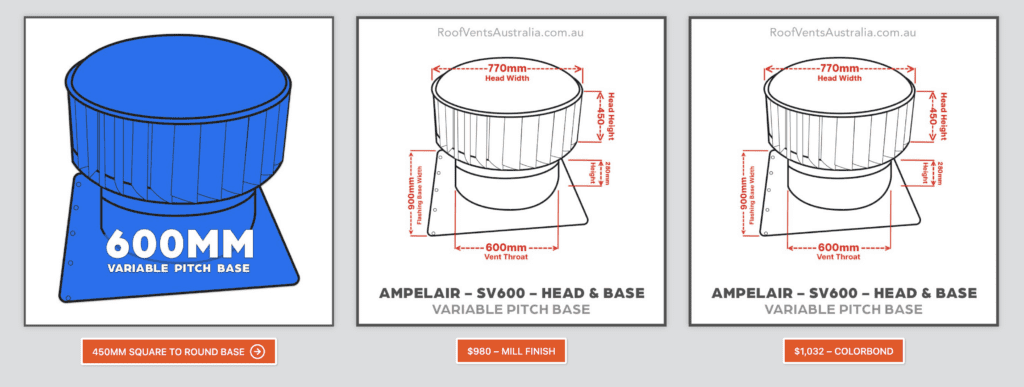Building Resilient Rooftops in Australia: A Comprehensive Guide on Advanced Roofing Technologies


Rain Heads Custom Made Shipped Free Australia Wide – Click Here >
Dambuster Rain Heads Shipped Free Australia Wide – Click Here >
Commercial Industrial Roof Vents 300mm-950mm – Click Here >
Eco-Friendly Roofing Insulation Shipped Free – Click Here >
Gutter Sumps Shipped Free Australia Wide – Click Here >
Introduction
The impact of climate change is increasingly apparent across Australia. From the violent cyclones in Queensland to bushfires in New South Wales and Western Australia, infrastructure resilience has become a focal point for building designers, architects, and planners. One component that is often overlooked but plays a critical role in building resilience is the rooftop. Given Australia’s unique environmental challenges, adopting cutting-edge roofing technologies is not just desirable but essential. In this article, we will delve into a range of innovative roofing solutions—from hurricane-resistant roof vents to energy-efficient roof sheeting for commercial buildings—that are tailor-made for Australian conditions.
Hurricane-Resistant Roof Vents
As Australia is no stranger to cyclones, especially in its northern states like Queensland and Northern Territory, using hurricane-resistant roof vents can make a huge difference. Traditional roof vents may suffer significant damage during a cyclone, leading to internal property damage. Hurricane-resistant roof vents are constructed using heavy-duty materials such as marine-grade stainless steel, designed to withstand extreme winds and pressures. A study conducted by James Cook University highlights the importance of such hurricane-resistant features in minimising cyclone damage to structures [1].
Roof Sheeting for Commercial Buildings
With commercial buildings often having larger roof areas, selecting the right roof sheeting is essential. Given Australia’s diversity in climate—from the humid tropical north to the arid conditions of the Outback—roof sheeting materials like Colorbond have gained popularity [2]. Colorbond is tested rigorously to withstand extreme UV radiation, corrosion, and fluctuations in temperature, making it suitable for Australia’s harsh conditions.
Noise-Reducing Roof Insulation
Urban environments like Sydney and Melbourne can be noisy, which impacts the quality of indoor environments. Noise-reducing roof insulation made from high-density, flexible materials can significantly reduce the transfer of external noise into the building. Such insulation types often come with thermal benefits, contributing to energy efficiency.
Automated Roof Vent Systems
While manual roof vents serve the purpose of releasing hot air, automated roof vent systems offer more precise control. These systems use sensors to determine the internal and external temperature and humidity, adjusting the vents accordingly. They are particularly effective in places with variable weather conditions, like Tasmania and Victoria, where automated adjustments can enhance indoor comfort year-round.
Solar-Powered Rainwater Heads
Given Australia’s increasing focus on renewable energy solutions, solar-powered rainwater heads are an excellent choice. These systems utilise solar panels to collect rainwater more efficiently and direct it into storage tanks. By doing so, they contribute to sustainability while meeting the requirements of the National Construction Code (NCC) [3].
Skylight Roof Vent Combinations
Integrating skylights with roof vents is a two-fold solution that maximises natural light penetration while allowing hot air to escape. This is especially useful in southern states like South Australia and Victoria, where winters can be gloomy. Utilising natural light effectively can reduce the reliance on artificial lighting, thereby lowering energy costs.
Marine-Grade Stainless Steel Vents
For coastal areas such as Queensland and New South Wales, marine-grade stainless steel vents offer excellent resistance to corrosion from saltwater. They are durable and require minimal maintenance, making them ideal for both residential and commercial properties in these regions.
Passive Cooling Roof Vents
Passive cooling roof vents use natural air flow principles to ventilate a space, making them ideal for locations like Perth and Adelaide, where summer temperatures can soar. They are cost-effective and environmentally friendly, reducing the reliance on air conditioning systems.
Heat-Resistant Box Gutters
Australia’s bushfires have necessitated the development of heat-resistant building materials. Heat-resistant box gutters made of non-combustible materials like aluminium or zinc can reduce the risk of fire spreading to the rooftop. The Australian Building Codes Board (ABCB) has also set guidelines for the use of such heat-resistant materials in building construction [4].
Energy Star Rated Roofing
With rising energy costs, investing in Energy Star rated roofing materials can offer significant savings. These materials are tested for their ability to reflect more sunlight and absorb less heat, contributing to lower energy costs, especially during hot Australian summers.
Best Roofing Materials for Australia
In Australia, the best roofing materials vary based on geographic and climatic factors. Terracotta tiles are ideal for regions with volatile weather, like Melbourne, due to their thermal efficiency. On the other hand, metal roofs are more suitable for areas prone to bushfires, such as parts of New South Wales and Western Australia.
Wind-Powered Roof Ventilators
Harnessing the power of the wind, wind-powered roof ventilators are an excellent solution for areas with steady wind conditions like coastal regions in South Australia and Tasmania. They require no electricity and offer excellent ventilation.
Conclusion
Given the diverse and often harsh Australian climates, from cyclones to bushfires, investing in resilient roofing technologies is paramount for both residential and commercial buildings. It is advisable to consult professionals who can assess the specific needs of your region, thereby enabling you to select the most appropriate and effective roofing solutions.
References
[1] “Performance of housing in windstorms,” James Cook University, 2021. [2] “Weather durability of Colorbond steel in Australian Conditions,” BlueScope Steel, 2018. [3] National Construction Code (NCC), Australian Building Codes Board, 2019. [4] “Fire Performance of Building Materials and Structures,” Australian Building Codes Board (ABCB), 2020.
By incorporating the right roofing technologies, Australians can better equip their buildings to face the challenges of the future. From cyclone-resistant vents to heat-resistant gutters, there is a plethora of options to consider. It’s time we put a roof over our heads that not only shelters us but does so in the most resilient and efficient way possible.

